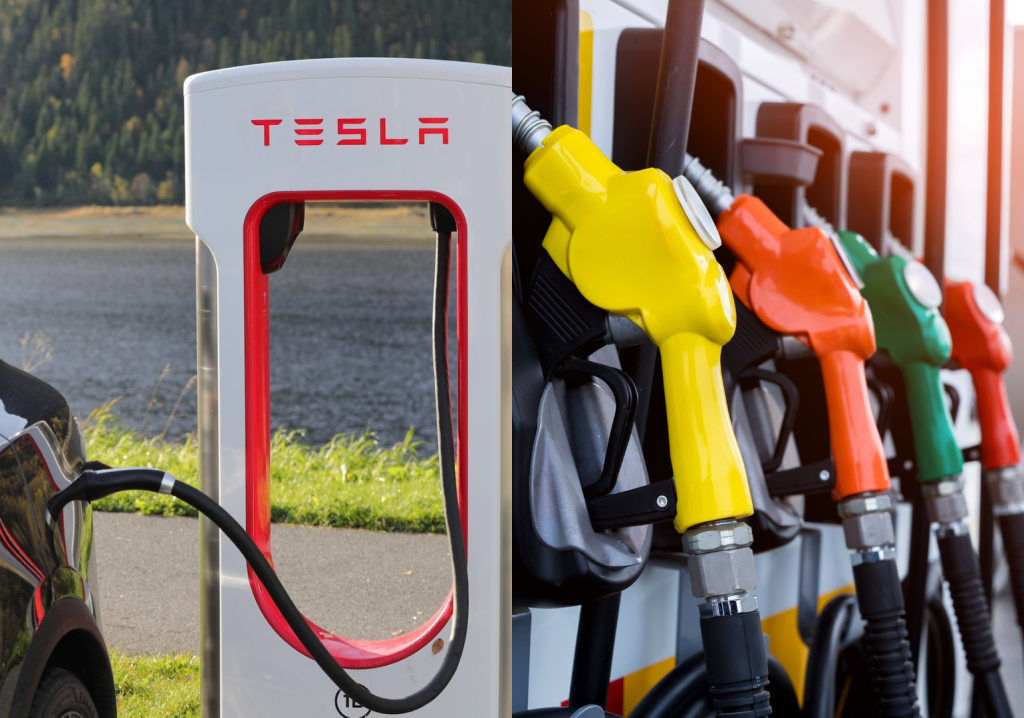Do electric vehicles produce fewer carbon emissions in total – or do their greenhouse-heavy production requirements dull the sheen of their green credentials?
It’s well-known that electric vehicles are cleaner and greener to run than those powered by fossil fuels. But does this logic still ring true when factoring in total lifecycle emissions?
This approach encompasses the complete range of emissions created to produce, run and then dispose of a vehicle and is a far more accurate way to assess its true environmental impact.
It also acknowledges a key challenge for electric vehicles currently: manufacturing an EV is significantly more carbon-intensive than building a traditional petrol or diesel vehicle.
Do electric vehicles produce fewer carbon emissions in total – or do their greenhouse-heavy production requirements dull the sheen of their green credentials? create crunches the numbers to paint the full picture.
Emissions during production
Despite their green credentials, electric vehicles produce around twice as many greenhouse gases during their manufacture as a typical combustion car. Primarily, this is down to the energy-intensive process of extracting, refining and transporting the raw materials required to build an EV’s battery.
In fact, manufacturing an EV’s lithium-ion battery accounts for between 40-60 per cent of its total production emissions, or roughly about the same as producing all the other materials required to make the car combined.
Many factors can influence how emissions-heavy a battery’s construction is, including its design and chemical make-up, but by far the biggest influence is where it is made.
Around 70 per cent of the world’s EV batteries are produced in China, which has a greater reliance on fossil fuels and produces more emissions as a result. Batteries produced in Europe, meanwhile, are made using a higher share of renewable energy and thus produce less carbon.
Sweden is the poster-child for green battery production, with batteries manufactured there generating 45 kg of carbon dioxide per kWh of capacity compared with 108 kg of carbon dioxide per kWh in China.
To compare how emissions-intensive an EV is to produce for the Australian market versus a typical petrol car, we’ve used data from the Electric Vehicle Council’s (EVC) lifecycle calculator.
As Australia gets most of its EV batteries from China, we’ve used that country’s emissions for the manufacturing source. The comparison data is based on an average medium SUV, which is one of Australia’s highest-selling segments and includes popular models like the Tesla Model Y and Toyota RAV4.
Carbon emissions emitted during use
If electric vehicles have a larger carbon footprint before they even turn a wheel, then the advantage swings back dramatically once you hit the road.
Most of a car’s lifetime emissions come from the power it requires to drive, and this is where electric vehicles cash in. Unlike petrol vehicles, which burn fuel to power their engines and release emissions in the process, EVs produce no tailpipe emissions.
Electric powertrains are also far more efficient at turning their stored energy into momentum. Where a petrol-powered car converts between 12-30 per cent of its energy into power, due to heavy heat and drivetrain losses, an EV utilises around 80 per cent of its power at the wheels. That means less energy, and fewer emissions, to travel the same distance.
The biggest influence on an EV’s driving emissions is the source of the electricity used to power its large battery. A car recharged off a grid using lots of fossil fuels will produce more emissions than one dispensing electricity produced by renewables. The cleaner the energy source, the lower the emissions.
Even the ‘dirtiest’ electric car, however, will produce far fewer emissions to drive than a petrol-powered vehicle. Over a typical car’s lifespan in Australia (189,000 km total, or 12,600 km per year according to the Bureau of Statistics) a mid-sized electric SUV charged on the national grid – which uses a combination of fossil fuels and renewables – will produce around 10.5 t of carbon according to the EVC’s emissions calculator.
An equivalent petrol-powered SUV will emit almost 46 t.
Where you live in Australia can have a huge influence on the emissions your EV produces. An EV charged in Western Australia, for example, isn’t as green as one charged in Tasmania, which has the highest mix of renewables in the country.
A car charged using rooftop solar, which is available on three million homes in Australia, produces even fewer emissions over its lifetime.
So, while an electric car might start with a higher emissions tally, after three years of ownership, or around 38,000 km of driving, an EV clearly becomes the cleaner option.
This “payback” time for EVs will only shrink as energy production shifts towards renewables and advances in manufacturing and mining sees a reduction in emissions created during battery production.
Estimates by McKinsey suggest ambitious battery producers “have the ability to reduce the carbon footprint of battery production by up to 75 per cent in the next five to seven years”.
Carbon emissions emitted during end-of-life
Winner: EVs
Another area ripe with potential to improve the carbon footprint of EVs is end-of-life reuse and recycling. Large lithium-ion batteries can store energy long after a car ceases being driven, giving them a predicted ‘second life’ of another 10 years for second-use applications before being recycled.
Battery recycling for electric vehicles is still developing and it won’t be until the mid-to-late 2030s that its true impact begins to be realised. As such, the Electric Vehicle Council has taken a conservative approach when assessing ‘end-of-life emissions’ in its calculator.
Explore more innovative ways of reducing carbon emissions at Engineers Australia’s Climate Smart Engineering 2024 conference in November.
